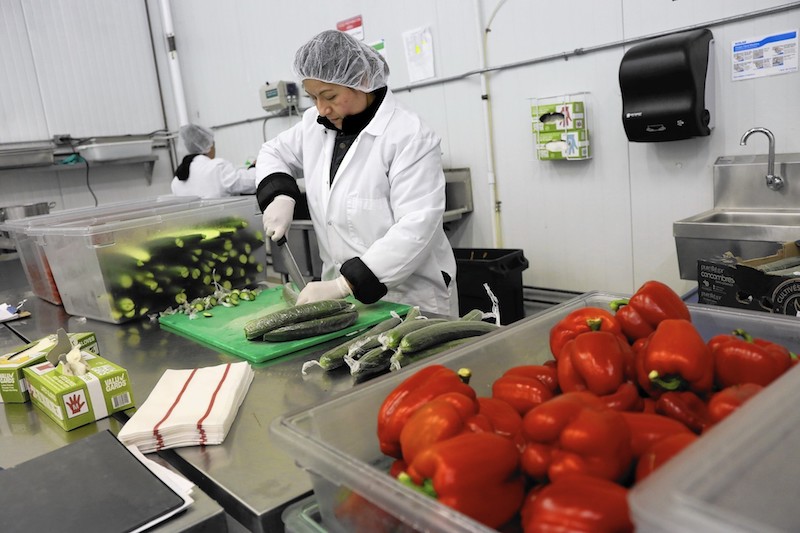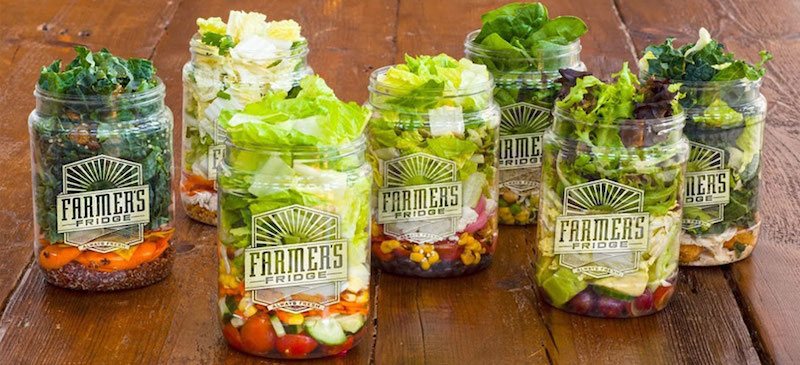No More Excuses: Salad Vending Machines Make Healthy Eating Easy
You’ve probably heard at least one person say, “I wanted to eat healthy, but I was on the road (or in a meeting, visiting someone in the hospital, etc.) and fast food was all I could find.” With the introduction of Farmer’s Fridge, that excuse will soon be obsolete in many US cities. Debuting in Milwaukee and Chicago in 2013, this salad vending machine gives people a chance to stock up on a variety of salads, bowls, proteins, snacks, and beverages wherever they might be. The best part is, it’s freshly stocked every morning.
The Inspiration

Farmer’s Fridge founder Luke Sanders drove an average of 1,000 miles a week for his first sales job out of college. He soon grew bored of being limited to junk food and microwaved sandwiches from convenience stores as his only meal options. He imagined a vending machine that could provide fresh and delicious salads at virtually any location with electricity.

Sanders introduced his first salad vending machine prototype in 2013. All it needed to operate was electricity (the initial energy cost to operate one machine was $10 a month, though it’s since gone up to around $25 a month). He positioned it in a downtown Chicago food court, flanked by a McDonald’s and a Dunkin Donuts. It didn’t take long before the unmanned machine was getting five-star reviews from the locals.
The Menu

With five to eight choices in each food category, Farmer’s Fridge has something for everyone. Everything is packaged in mason-style jars except the prepackaged beverages. Each salad/bowl is layered and includes a variety of ingredients, including fresh fruits and vegetables, quinoa, cheese, beans, pesto, oats, soba noodles, and granola. On top of that, you can also add in some proteins like tofu, garlic-lemon shrimp, seasoned chicken, and hard-boiled eggs. Snackers can opt for trail mix, an energy bar, spiced nuts, veggies with hummus, or a yogurt parfait. The average price of a meal-sized salad is about $7, far less expensive than those sold at brick-and-mortar health food purveyors.
The Process
The refrigerators inside the vending machines are digitally linked to Farmer’s Fridge local kitchen in Chicago’s Fulton Market district. Each day, computer-generated reports let the company know what offerings are needed based on algorithms regarding food-buying trends and seasonally available produce. The staff then chops, slices, dices, prepares, and packages the food for transport. All the machines are stocked before the breakfast crowd arrives, and the process is repeated every day except Saturday and Sunday. At the end of each day, excess food is donated to local food banks.
The Clientele
People who frequent Farmer’s Fridge vending machines come from all woks of life. They come from office complexes with employees who work through lunch, hospitals with bad cafeteria food, college and university student unions, convenience stores with only prefab food items, and neighborhoods whose restaurants don’t offer enough fresh salads.
The Future

Sanders already has approximately 120 of his machines operating throughout Chicago and Milwaukee. His sales are strong enough to double that number before the end of the year. If all goes as planned, Sanders will be able to expand his operations throughout the Midwest and eventually across the entire country.




